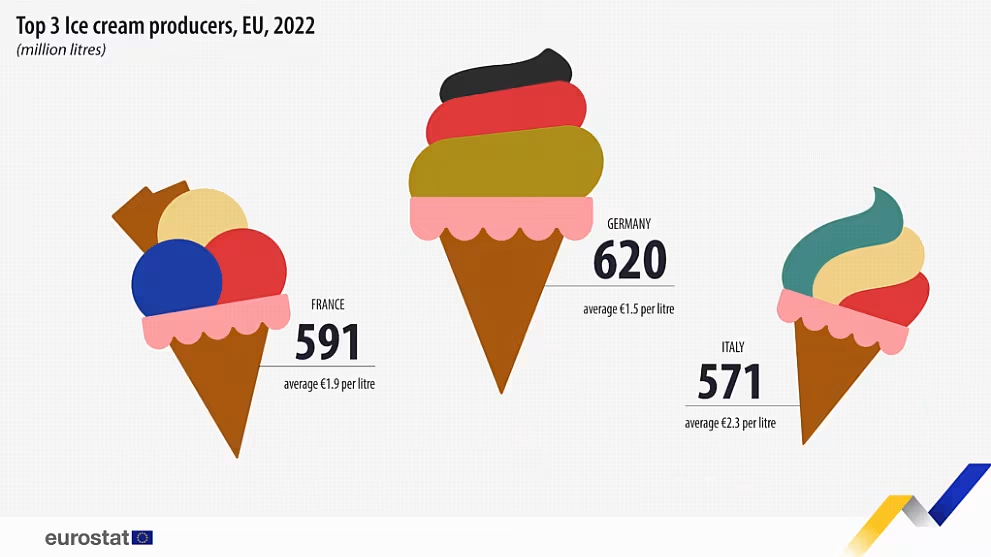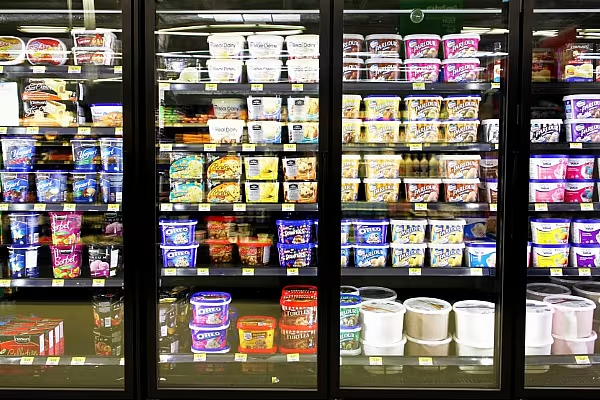Summer wouldn't be summer without a refreshing ice cream, and the European Union produced a total of 3.2 billion litres of ice cream last year, new data from Eurostat has shown.
This marks a 5% increase on the previous year, the data showed.
But what European countries produced the most ice cream last year? ESM examines the data.
1. Germany
Total: 620 million litres
Germany was the biggest producer of ice cream in Europe last year, producing some 620 million litres, according to Eurostat data. It also produced the cheapest ice cream in the bloc, with an average price of €1.5 per litre.
2. France
Total: 591 million litres
France produced some 591 million litres of ice cream last year, putting it in second place on the list. The average price of ice cream in France was €1.9 per litre.
3. Italy
Total: 571 million litres
Renowned for its 'gelato', Italy places third on the list with production of 571 million litres in 2022. The average price of ice cream in Italy was €2.3 per litre, according to Eurostat.
4. Spain
Total: 321 million litres
In fourth place, Spain produced some 321 million litres of ice cream last year, according to Eurostat.
5. Belgium
Total: 198 million litres
Belgium rounds off the top five with production of 198 million litres of ice cream produced last year, Eurostat's data showed.
Other major producers of ice cream in Europe include Norway (56 million litres), Lithuania (46 million litres), Czechia (44 million litres), Finland (38 million litres), Romania (35 million litres), Croatia (33 million litres), Latvia (19 million litres), Denmark (16 million litres) and Austria (2.3 million litres).
Austria produced the priciest ice cream, the data showed, costing an average of €7.0 per litre, followed by Denmark at €4.4 per litre and Finland at €2.8 per litre.
Data on ice cream production was not available for Bulgaria, Greece, Hungary, Ireland, the Netherlands, Poland, Portugal, Slovenia and Sweden, Eurostat added, while Cyprus, Luxembourg and Malta are exempt from providing data on production due to their economic sizes.












